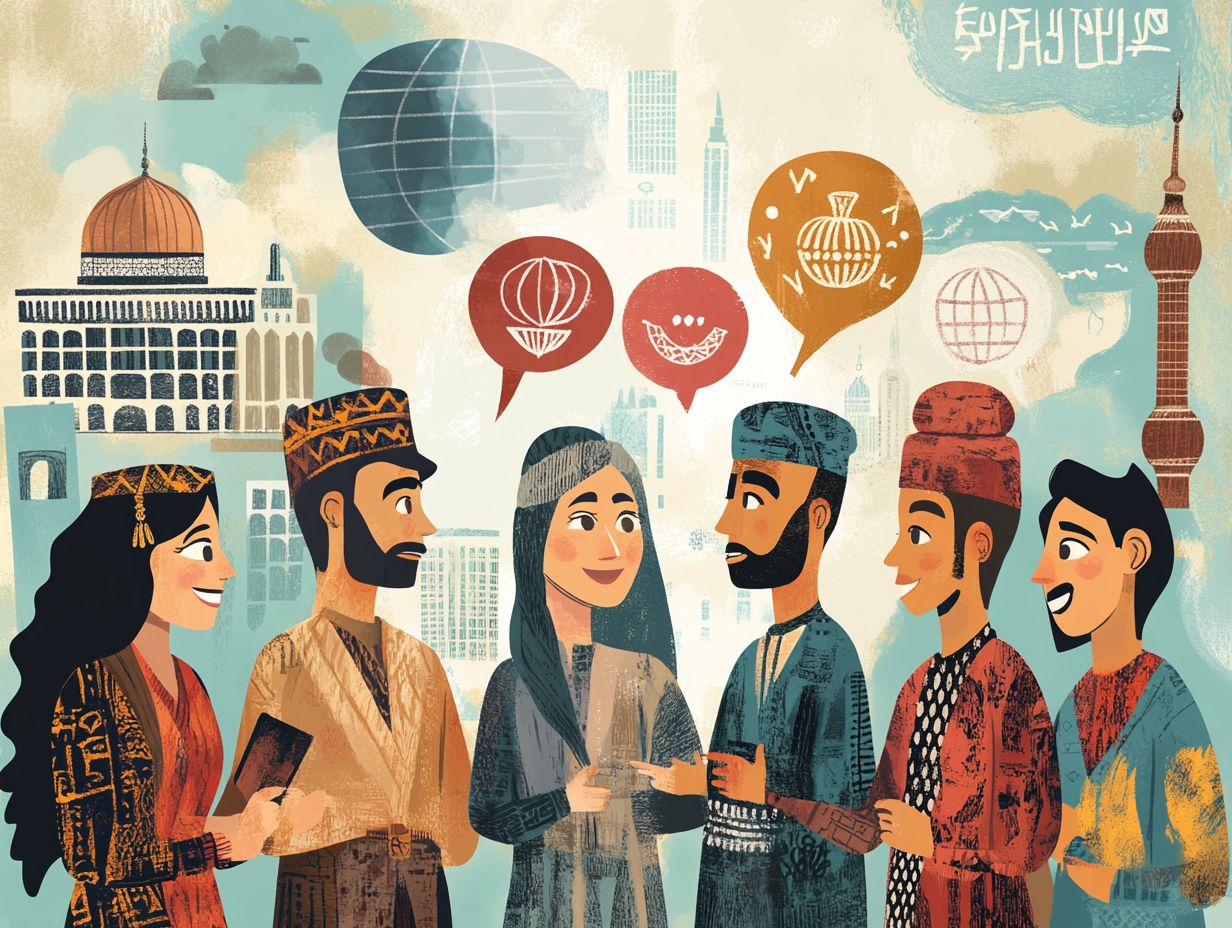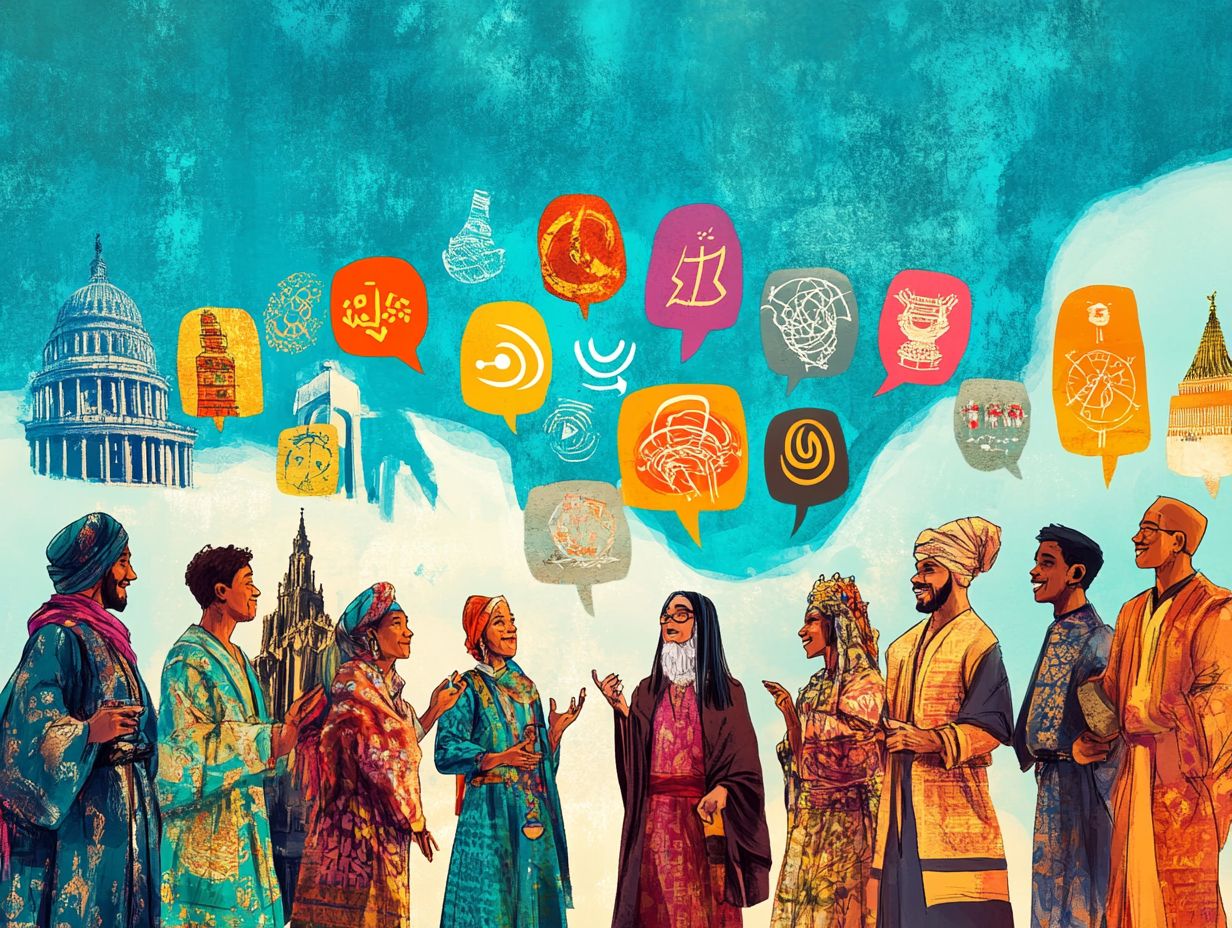The Significance of Cultural Nuances in Language
Contents
- Key Takeaways:
- Understanding Cultural Nuances in Language
- The Impact of Cultural Nuances on Language
- Examples of Cultural Nuances in Language
- The Importance of Cultural Competence in Language
- Navigating Cultural Nuances in Language Learning
- Frequently Asked Questions
- What are cultural nuances in language?
- Why are cultural nuances important in language?
- How can cultural nuances affect language learning?
- What are some examples of cultural nuances in language?
- How can one learn about cultural nuances in language?
- What can happen if cultural nuances are ignored in language?
Key Takeaways:

- Cultural nuances play a crucial role in language, affecting communication and perception as well as the evolution of language.
- Examples of cultural nuances include greetings, politeness, taboo topics, and gestures.
- To be culturally competent, one must build awareness and adapt effective cross-cultural communication strategies.
Understanding Cultural Nuances in Language
Understanding cultural nuances in language is vital for effective global communication. These nuances include deep meanings and emotional subtleties that shape self-expression across different cultures.
Language isn t just a tool for sharing information; it s closely linked to cultural identity, social norms, historical references, and idioms that underpin human interaction. Acknowledging these nuances helps overcome language barriers and enhances communication in professional language services and adapting content for different cultures.
Defining Cultural Nuances
Cultural nuances are the subtle variations in language that convey richer meanings and emotional layers. They often appear in idioms, expressions, and local customs, and can differ dramatically between cultures.
For example, the Japanese phrase “Iie, mitsu no me,” translates to “No, it has three eyes.” This quirky expression indicates that something is clearly wrong or nonsensical. Similarly, the Chinese idiom “D i z i ji l ,” meaning “to stay at home,” embodies the idea of being cautious and reflective.
Grasping the context of these phrases is essential for avoiding misunderstandings! Neglecting these subtleties in translation can lead to misunderstandings or even cause offense. Therefore, a translator’s role goes beyond simply converting words; it involves adapting to cultural contexts to ensure nuanced meanings resonate effectively with diverse audiences.
The Impact of Cultural Nuances on Language
The impact of cultural nuances on language is profound. They influence how you convey messages and how those messages are perceived by audiences across various cultures.
Misinterpretations can easily emerge from language barriers. This underscores the importance of considering cultural contexts and employing adaptation strategies in your translation practices.
Join this exciting journey to discover the rich tapestry of language woven from diverse cultural backgrounds.
Communication and Perception
Communication and perception are closely connected, with your interpretation of language often shaped by your cultural understanding and context. This connection highlights the importance of using language services to navigate cultural nuances effectively.
Different cultures have unique communication styles that influence their interactions. For example, in many East Asian cultures, indirectness and high-context communication where more is implied than said are valued. Here, the unspoken carries as much weight as the spoken, and maintaining harmony is paramount.
In contrast, Western cultures tend to appreciate directness and a straightforward approach to communication. This divergence can lead to misunderstandings. For instance, someone from a direct culture may view the nuanced speech of an individual from a high-context culture as evasive or insincere.
Understanding these differences is crucial for effective communication! It also fosters mutual respect, allowing you to build meaningful connections across diverse backgrounds.
Language Evolution and Adaptation

Language evolves and adapts over time, reflecting changes in cultural identity and societal norms. It weaves in historical references that provide deeper insights into the context of communication. This evolution emphasizes how important it is for you to understand cultural nuances for effective translation.
As societies progress, new technologies and trends shape their vocabulary, resulting in adapted phrases and idioms that capture contemporary experiences. For example, the rise of social media has introduced a wave of digital vernacular, changing how you express emotions and share experiences.
Expressions rooted in older cultural practices may take on new meanings as they intersect with modern values, complicating localization. You must stay attuned to these shifts to ensure the essence of original messages resonates with nuanced cultural interpretations.
By doing so, you bridge the gap between differing worldviews and create a richer understanding in your translations.
Examples of Cultural Nuances in Language
Cultural nuances in language provide compelling examples of how deeply embedded values shape communication styles around the globe. From the subtle intricacies of greetings and expressions of politeness to the sensitive handling of taboo topics and gestures that might have different meanings across cultures, these nuances play a significant role.
Understanding these examples is essential for overcoming language barriers in translation, enabling more effective and respectful communication.
Greetings and Politeness
Politeness and greetings vary significantly across cultures, guided by specific social norms for appropriate forms of address and expression. By understanding these cultural nuances, you can prevent misunderstandings and enhance communication during translation efforts.
Take Japan, for example, where bowing goes beyond a simple greeting; it embodies a profound tradition rooted in respect and hierarchy. In China, a handshake often accompanied by a subtle nod represents mutual respect and a readiness to engage.
These practices reveal deeper cultural values, highlighting the importance of community and relationships in Eastern societies. In contrast, Western cultures may value a firm handshake as an expression of confidence and openness.
Being aware of these diverse customs is essential, especially for translators navigating between cultures. It ensures that intended messages are conveyed both appropriately and respectfully.
Taboo Topics and Gestures
Taboo topics and gestures can greatly affect your communication, often uncovering deeper cultural sensitivities that may not be immediately visible. It s essential to understand which subjects are sensitive and which gestures may be deemed inappropriate. This knowledge is vital for effective cross-cultural communication and translation.
For example, discussing personal matters like family relationships might be common in certain cultures, yet it could come off as intrusive in others. Similarly, while a casual thumbs-up signals approval in many Western countries, it can have an offensive meaning in parts of the Middle East. Recognizing these nuances is crucial for your professional language services. This awareness promotes respectful communication and significantly enhances the effectiveness of your interactions.
By being attuned to these cultural intricacies, you can bridge gaps between diverse groups, ensuring that messages are conveyed thoughtfully and accurately.
The Importance of Cultural Competence in Language
The significance of cultural competence in language cannot be overstated. Cultural competence means understanding and respecting different cultures. It gives you the power to navigate cultural differences and engage in meaningful communication.
By cultivating cultural awareness, you can ensure that your messages are conveyed accurately and respectfully. This will resonate with diverse audiences.
Building Cultural Awareness

Building cultural awareness is an exciting journey that can transform your communication skills! It significantly enhances your communication effectiveness, especially in translation services aimed at diverse audiences.
By embracing cultural sensitivity, you can become more adept at recognizing and addressing cultural nuances that matter. To cultivate this critical skill, consider engaging in specialized training sessions and workshops that offer valuable insights into various cultural contexts.
You might explore courses tailored to specific regions or communities, allowing you to deepen your understanding of local customs, idiomatic expressions, and social etiquette. Dedicating time to self-education whether through reading literature or watching films from different cultures can greatly enrich your perspective and help bridge any cultural gaps you encounter.
You can also regularly collaborate with native speakers and actively seek their feedback to further refine your sensitivity to the intricacies of diverse cultural backgrounds.
Effective Cross-Cultural Communication
Effective cross-cultural communication hinges on your ability to grasp cultural nuances. This allows you to bridge language barriers and cultivate meaningful interactions. This skill is particularly vital in language services designed to enhance global communication.
To excel in this area, active listening and empathy are crucial. For instance, a professional translator who genuinely engages with their client’s cultural context can adapt their message thoughtfully, ensuring it resonates with the intended audience.
Consider a marketing campaign that faced challenges in Asia; it was revitalized when the company enlisted local translators who understood the importance of specific symbols and colors in that region. This transformed the campaign’s message into one of respect and appreciation rather than superficial interest.
Such examples underscore how empathy and a sincere commitment to understanding diverse perspectives can pave the way for successful outcomes.
Navigating cultural nuances in language learning is an essential skill that enriches not only your linguistic proficiency but also the emotional subtleties in your communication. By grasping these nuances, you can immerse yourself more fully in the language and its cultural context.
This fosters deeper connections and understanding.
Strategies for Understanding and Incorporating Cultural Nuances
Strategies for understanding and incorporating cultural nuances into your language learning can significantly elevate your experience, making it not just relevant but truly impactful. Consider immersing yourself in cultural contexts and actively seeking out local practices and expressions.
Engage with native speakers through conversation exchange platforms or language meetups, where authentic dialogues can truly unfold. Exploring films and literature from the culture associated with the language offers rich insights into societal values and traditions.
Documentaries that reflect cultural practices, combined with travel experiences that provide firsthand encounters, can further solidify these valuable lessons.
Participating in cultural festivals or local events, even if virtually, allows you to grasp the subtleties of humor, expressions that have a different meaning than the literal words, and traditions that often shape conversational language. By embracing these experiences, you re not just learning a language; you re stepping into a vibrant world of culture and connection!
Frequently Asked Questions
What are cultural nuances in language?

Cultural nuances in language refer to the subtle differences in meaning, tone, and usage of words and expressions that are specific to a particular culture or group of people.
Why are cultural nuances important in language?
Cultural nuances play a significant role in effective communication, as they can impact how a message is perceived and understood by different cultures. They also help convey deeper cultural meanings and values.
How can cultural nuances affect language learning?
Cultural nuances can make language learning more challenging, as they require an understanding of the cultural context in which a language is used. It is important to study cultural nuances alongside the language itself to truly understand and use it effectively.
What are some examples of cultural nuances in language?
Examples of cultural nuances in language include:
- The use of honorifics and titles
- Body language and gestures
- Varying levels of formality in different cultures
How can one learn about cultural nuances in language?
One can learn about cultural nuances in language through immersion and exposure to different cultures, as well as through cultural sensitivity training and language classes that focus on cultural understanding.
What can happen if cultural nuances are ignored in language?
Ignoring cultural nuances in language can lead to misunderstandings, misinterpretations, and even offense. It can also hinder effective communication and create barriers between individuals or groups from different cultures.
Ready to dive deeper into the world of language and culture? Explore more resources or join a language class today!





